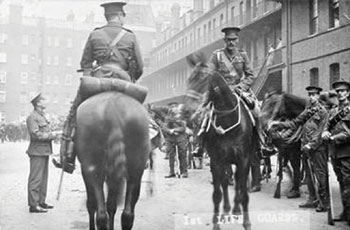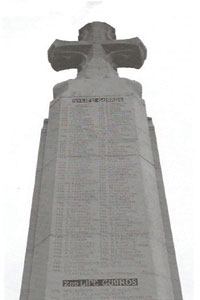|
LAST STAND AT ZANDVOORDE 1914
Lord Hugh Grosvenor’s Noble Sacrifice
by Mike McBride
Foreword by Dan Snow
|
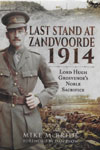 Zandvoorde is a special place for all Household Cavalrymen, since it is here, in October 1914, that The Life Guards and Royal Horse Guards suffered their greatest loss during the First World War. In October 2014, the Household Cavalry conducted its own ceremony to remember those who were killed at Zandvoorde and nearby; it was a very special occasion. Zandvoorde is a special place for all Household Cavalrymen, since it is here, in October 1914, that The Life Guards and Royal Horse Guards suffered their greatest loss during the First World War. In October 2014, the Household Cavalry conducted its own ceremony to remember those who were killed at Zandvoorde and nearby; it was a very special occasion.
On the scale of the fighting that followed, and in the maelstrom of four years of war, both Zandvoorde and the 1st Battle of Ypres could easily be forgotten, and yet this battle was just as important as the later ones, since the consequences of defeat were immense. Had Ypres fallen, the BEF would have soon been encircled and may well not have escaped as they did in 1940. The outcome of the war could have been very different.
Mike McBride has done an excellent job in researching his book Last Stand At Zandvoorde 1914, since he had very little to go on; detailed accounts of the battle are patchy, and there were tragically few survivors. He begins the book with a useful background, painting a vivid picture of the events that led up to the fighting in late October 1914. The soldiers who went to war were both regulars and reservists, well-trained for a different kind of war to the one they had to fight, and certainly not fully equipped for what was to come. For the cavalry, there was plenty of mounted reconnaissance, an essential role as the author reminds us. However, the cavalrymen soon found their horses to be a tragic encumbrance, as they dismounted to hold a thin line around Ypres, without reserves or even entrenching tools. For the horses it was particularly grim. To quote one account in the book ‘We were often hungry and so were the mules and horses - and how those poor creatures suffered ... innocent victims of man-made madness. They broke your heart, especially when you passed the injured ones, left to die, in agony and screaming with pain and terror’.
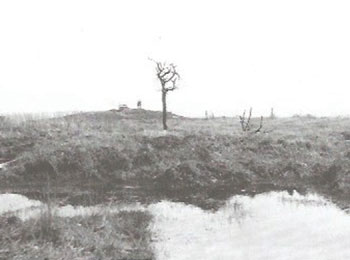
Zandvoorde, soon after the end of the war |
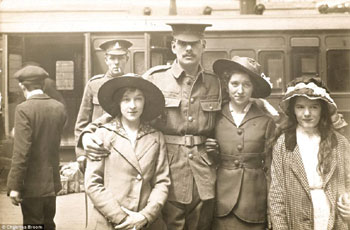
A Household Cavalryman says goodbye to his family |
While there were a good number of veterans of the South African War among the officers and soldiers of the BEF, there were also many who had not yet seen action. One of these was Captain Lord Hugh Grosvenor who was commissioned into the 1st Life Guards in 1903. Like so many of his fellow officers, he was educated at Eton, where, the author suggests, he was imbued with ‘an ethos of team spirit, loyalty and gentlemanly honour’, epitomised by the words of Henry Newbolt, ‘Play up! Play Up! And play the game!’ Grosvenor, and men like him, would have read about the famous last stands from previous centuries, and they were ready to do their duty when the time came. Tragically, Grosvenor’s last stand was just a few weeks after he and his squadron had arrived in Flanders. In hastily prepared trenches that bore little resemblance to those that came later, the Household Cavalry helped to stop a much larger German army. Over 100 were killed, with only a few bodies ever identified. The Household Cavalry Memorial at Zandvoorde bears witness to their sacrifice.
It is the personal letters that resonate with the passing generations. In a letter to his young son Gerald, Hugh Grosvenor begins in a jolly way by saying ‘I am very well and busy fighting the Germans’, going on to describe brief meetings with family relatives and friends nearby, ending his letter with ‘Your Loving Daddy’. One of the themes in this book, particularly among the officers, is the sense that they are all related, either by family or close friendship; everyone knew everyone in this part of the Army, regardless of rank or seniority.
In his last letter to his wife, Grosvenor plays down the situation by describing it as ‘decidedly monotonous’ before going on to request a new map case, a pair of strong warm puttees, and some new socks. He signs off with ‘No time for more now as the battle is raging close by and I hear some Germans are through our lines so we may have to turn out and I must be ready. Bless You Darling, Your Own Hugh’. He was killed the following day, 30th October 1914.
The book is well-illustrated, with many photographs from the archive of the Household Cavalry Museum. They tell a story in themselves, from the group photographs of the Edwardian period to the individual portraits taken by Christina Broom on the outbreak of war. Hugh Grosvenor’s fine and confident image, photographed at Knightsbridge Barracks in August 1914, beams across the century from the front cover of this splendid book. We know him to be a good leader, an honourable gentleman, and a loving husband and father. He was one of many who died then and later, but somehow the poignancy of his death, so early in the war and alongside his comrades in C Squadron, The Life Guards, adds to the story. This excellent account fills yet another piece of the vast jigsaw of the First World War.
The Editor
Last Stand at Zandvoorde 1914. Lord Hugh Grosvenor’s Noble Sacrifice. Pen & Sword, £19.99
|
|

 Zandvoorde is a special place for all Household Cavalrymen, since it is here, in October 1914, that The Life Guards and Royal Horse Guards suffered their greatest loss during the First World War. In October 2014, the Household Cavalry conducted its own ceremony to remember those who were killed at Zandvoorde and nearby; it was a very special occasion.
Zandvoorde is a special place for all Household Cavalrymen, since it is here, in October 1914, that The Life Guards and Royal Horse Guards suffered their greatest loss during the First World War. In October 2014, the Household Cavalry conducted its own ceremony to remember those who were killed at Zandvoorde and nearby; it was a very special occasion. 

